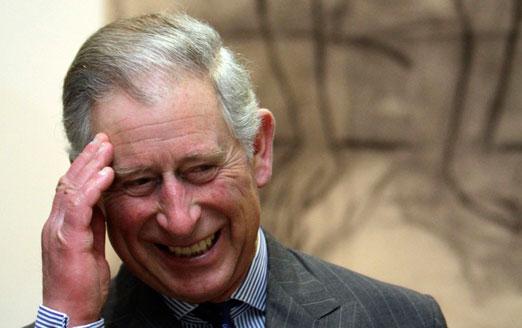His Royal Highness the Prince of Wales has called for streets to be reclaimed for pedestrians. The recommendation comes in a list of ten “geometric principles” designed to relearn from traditional approaches to architecture, which place human beings and nature at the heart of town planning and architectural design.
He would also like to do away with street signage, replacing “reduce speed now” signs with trees, bends and squares to encourage motorists to reduce their speed, and to encourage architects to move away from modern materials such as glass and concrete, and instead re-embrace materials that lend their buildings a local character.
His comments came during a 2,000 word essay written for the Architectural Review, in which he outlines his vision for architecture in the 21st century, admitting to being “somewhat surprised” to be asked for his views. He insists that his intention is not to “turn the clock back to some Golden Age,” but rather that he wants to address how to create “resilient, truly sustainable and human-scale urban environments that are land-efficient, use low-carbon materials and do not depend so completely upon the car.”
Above all, he would like to encourage “an approach to design based upon the crystalline analysis of the working of Nature. ‘Putting the human being at the centre of the design process’ goes beyond seeing people as pedestrians. As traditional thinking teaches, basing designs on the timeless universal principles expressed by Nature’s order enables the full scope of our humanity to be fulfilled, on the physical, communal, cultural and spiritual levels,” he writes.
The Prince wants to see “walkable, legible urban centres where mixed-income housing, shops, business premises and leisure facilities fit together.” To achieve this, he has drawn up a list of ten “geometric principles”, calling for developments to be “unobtrusive” and “respect the land”, to be in scale with their surroundings and the humans who use them, and to be in harmony with one another.
“Architecture is a language,” he writes. “We have to abide by the grammatical ground rules, otherwise dissonance and confusion abound. This is why a building code can be so valuable.”
“The pedestrian must be at the centre of the design process. Streets must be reclaimed from the car,” the Prince insists, although he does not elaborate on how this could be achieved. However, he also calls for the use of signs to be limited, and for wires to be buried as far as possible. “it is possible to rid the street of nearly all road signs by using ‘events’ like a bend, square or tree every 60-80 metres, which cause drivers to slow down naturally,” he insists.
“This approach does not deny the benefits and convenience that our modern technology brings. Far from it, the aim is to mix the best of the old with the best of the new. All I am suggesting is that the new alone is not enough. We have to be mindful of the long-term consequences of what we construct in the public realm and, in its design, reclaim our humanity and our connection with Nature, both of which, because of the corporate rather than human way in which our urban spaces have been designed, have come under increasing threat,” he concludes.
Prince Charles is well known for his strong views on architecture. In 1984 he shocked the architectural world during a speech at the 150th anniversary of the Royal Institute of British Architects (RIBA), when he described a planned modern extension to the National Gallery as a “monstrous carbuncle on the face of a much-loved and elegant friend”. The scheme was duly scrapped.
In 1989 he set up the Prince’s Foundation which is committed to developing and teaching sustainable developments which place community at the heart of the design.

COMMENTS
Please let us know if you're having issues with commenting.